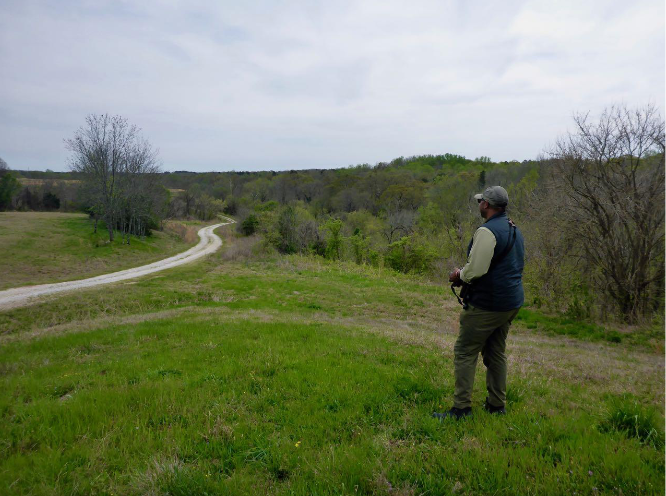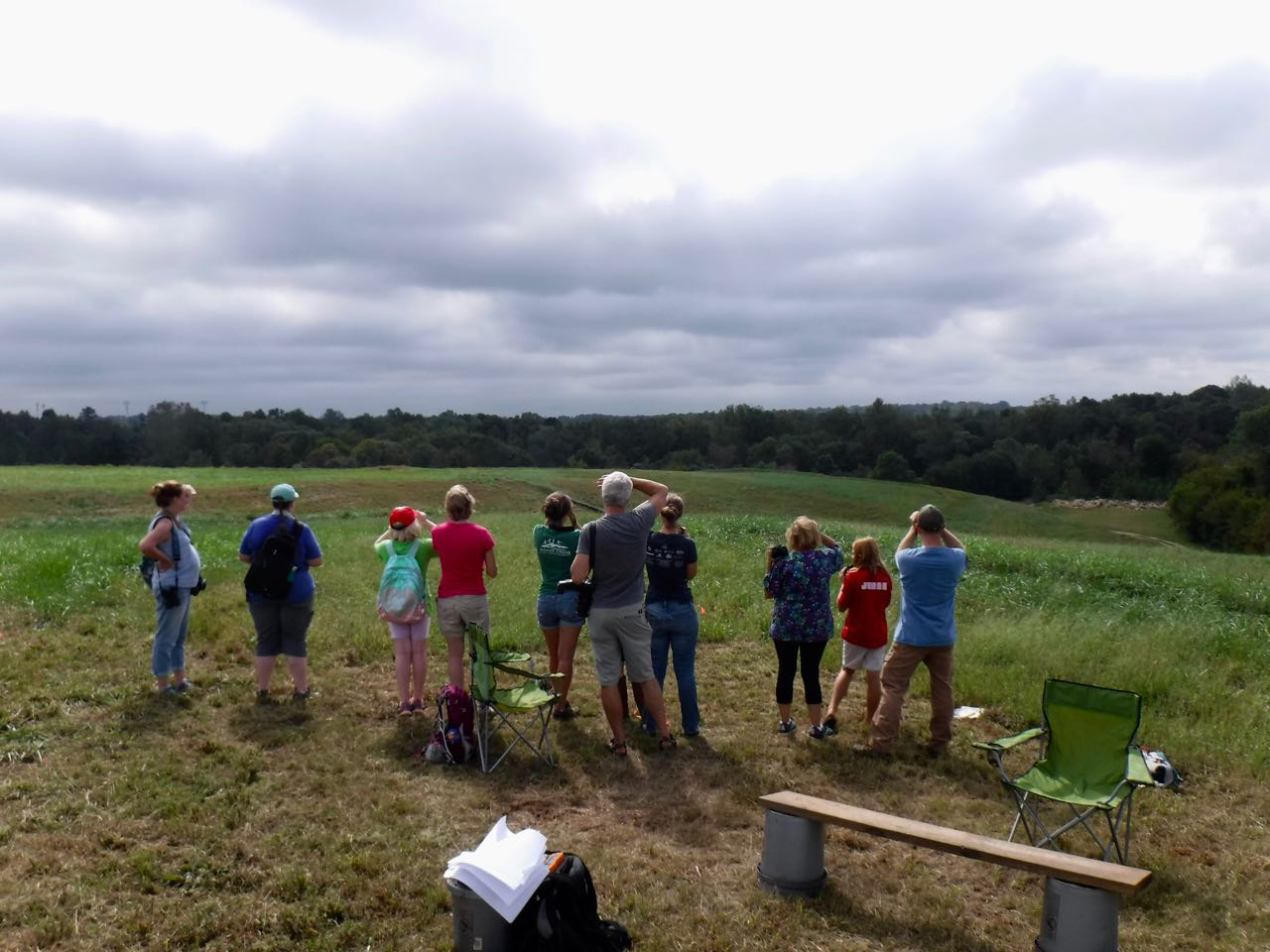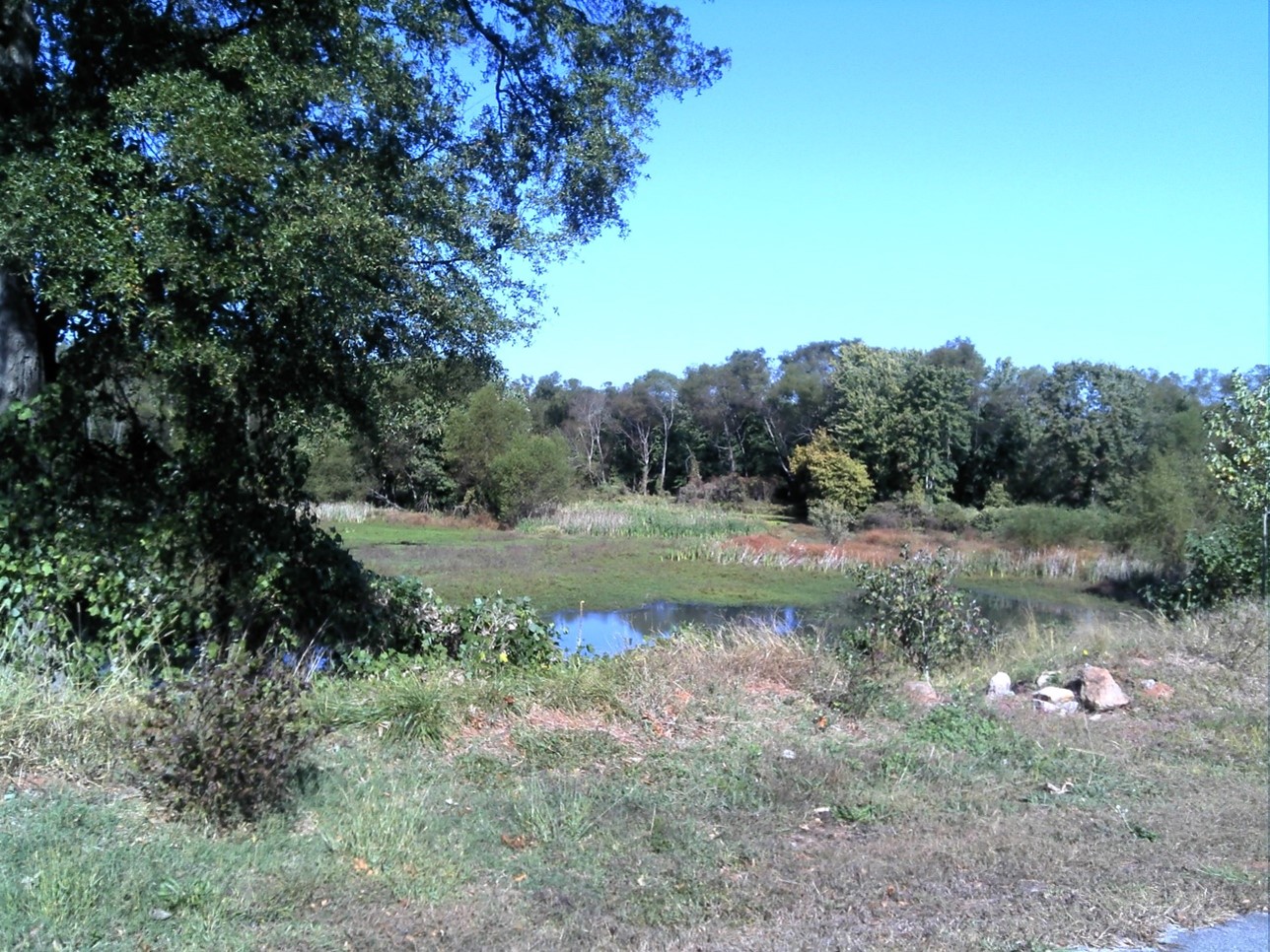Upstate Forever
Why Bird Conservation?
Upstate Forever (UF) is South Carolina’s first nationally accredited land trust, an organization with 25 years of experience building relationships and conserving lands in 10 upstate counties in the state. With a focus on clean water and clean air, UF has protected nearly 30,000 acres since 1998.
A large percent of these protected lands are grasslands and working lands with the potential to be restored or managed for grassland bird habitat. According to Scott Park, UF’s Glenn Hilliard Director of Land Conservation, many of the private landowners who manage these grasslands are looking for resources and guidance to implement these changes.
With motivated landowners who manage grasslands protected by conservation easements, UF was inspired to develop baselines and management guidelines for grassland bird habitats in the Piedmont Ecoregion of Upstate South Carolina; small grant funding was provided in 2019 by the Cornell Land Trust Bird Conservation Initiative to support this project. Working with passionate birding groups in the area, UF recorded field observations in two different but adjacent grassland habitats, a four-acre enhanced meadow at Conestee Nature Preserve and the forty-acre Greenville City Landfill, which is a monoculture dominated by fescue grass.
Observations were recorded in eBird, with results helping to establish a baseline for grassland birds in the area and informing the development of a Grassland Habitat Handout. The handout was shared at tabling events, incorporated in UF’s newsletter, mailed to landowners, broken down into several social media posts, and is still in circulation today, as a reference material for those interested in grassland habitats.
Spotlight Resources: eBird Surveys, Collaborative Partnerships, and Habitat Guide

“Having a great team makes everything hum,” notes Park. Along with committed staff at UF, the volunteers involved in this project included enthusiastic birders from the Greenville County Bird Club, who visited both grassland sites twice a month over the course of a year, recording their observations as eBird checklists. Because a hotspot for the Greenville landfill does not exist, observations at both sites were associated with the Conestee Nature Preserve hotspot; volunteers differentiated the sites with notes in their checklists.
With data from over two dozen eBird checklists to analyze, staff at UF was able to establish baselines for the two different grassland habitats, observe differences between the sites in numbers and varieties of bird species, and consider options for future management of both locations.
UF also collaborated with Professor J. Drew Lanham, PhD, Distinguished Alumni Professor of Wildlife Ecology at Clemson University, to create the five-page Grassland Habitat Handout that includes information about identifying grassland bird species and presents best management practices for improving grassland bird habitat.
Informed by a critical lands map that identifies the region’s most environmentally sensitive lands (developed in partnership with John Quinn, Associate Professor of Biology at Furman University), UF pinpoints their outreach efforts to priority land parcels in the region. Often, this means one-on-one conversations with landowners, notes Park. These meetings regularly lead to really productive conversations about the restoration and maintenance of grasslands.
Making the Connection

The annual easement monitoring visits conducted by UF’s stewardship team also provide key opportunities for introducing landowners to grassland habitat resources. Many landowners are eager to implement management changes, and they are looking for resources to help guide their efforts.
The Grassland Habitat Guide created with Dr. Lanham is a go-to resource for these landowners, introducing them to best management practices for improving habitat for grassland species like Grasshopper Sparrow, Eastern Meadowlark, and American Kestrel. Some of the recommendations in the guide include adjusting mowing schedules, planting bunching native warm season grasses, and establishing tall growing native plants for bird perches. The guide also includes pictures and descriptions of native grasses, helping readers identify species commonly found in grasslands.
Advice to Other Land Trusts
Park says that UF is very comfortable working with other partners, which allows the organization to take on projects that require different expertise or more capacity than the 26-person land trust can provide. For this project, UF joined forces with 25 volunteer birders and a renowned expert in the field to accomplish its conservation and education goals. Through this collaboration, UF was able to engage a new volunteer base through the birding community and establish a relationship with a new advocate, Dr. Drew Lanham.
Prioritizing your long-term goals is essential, notes Park. In some cases, this means partnering with other organizations to achieve regional land protection goals, such as protecting and enhancing grassland habitats for wildlife and birds. Often, if a land protection project is too large for its organizational capacity, UF will bring in the Nature Conservancy, the Open Space Institute, or The Conservation Fund to help conserve high-priority lands.
Next Steps

UF has set a bold goal of protecting 50,000 acres by 2027. The organization has been building capacity for its land protection program and is currently working on its third reaccreditation through Land Trust Alliance.
Since completion of the 2019 grant project, many aspects of the land trust have matured or developed, including its land management program. With new staff in place to conduct more one-on-one meetings, UF is frequently having land management conversations during conservation easement negotiations, building the foundation for bird-friendly habitat decisions in years to come.
One UF landowner is actively managing native grasslands for seed production and has expressed interest in developing a local seed bank for grassland species, while enthusiastic volunteers continue to collect eBird data at the two project sites. With a team of passionate partners, UF has set specific goals for grassland maintenance over the next five years, and part of this plan is to put suggested bird habitat management practices into place at both Conestee Nature Preserve and the Greenville City Landfill.
